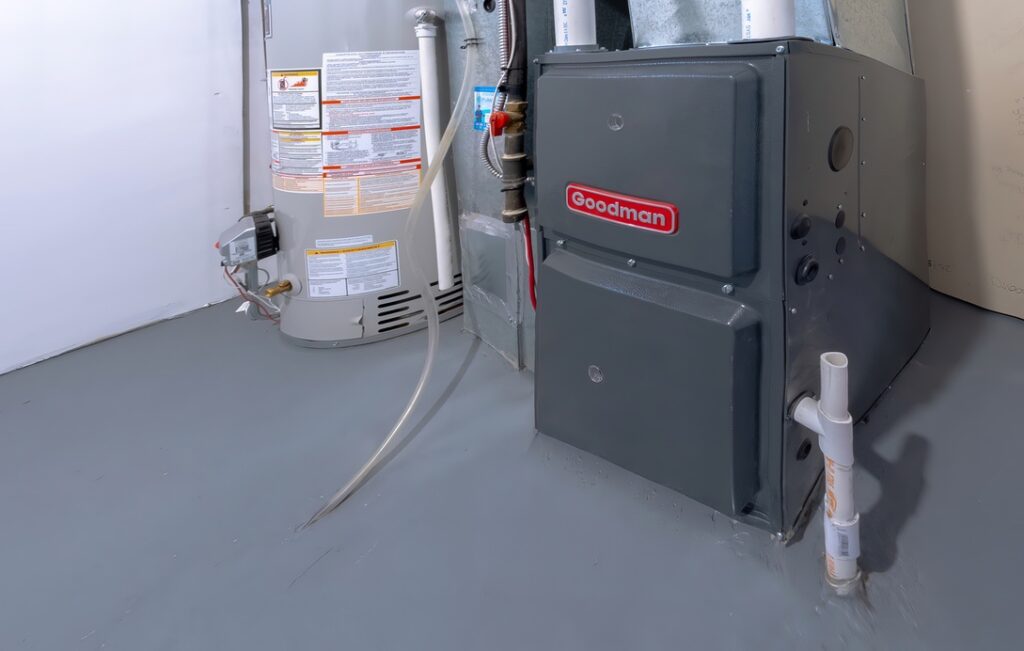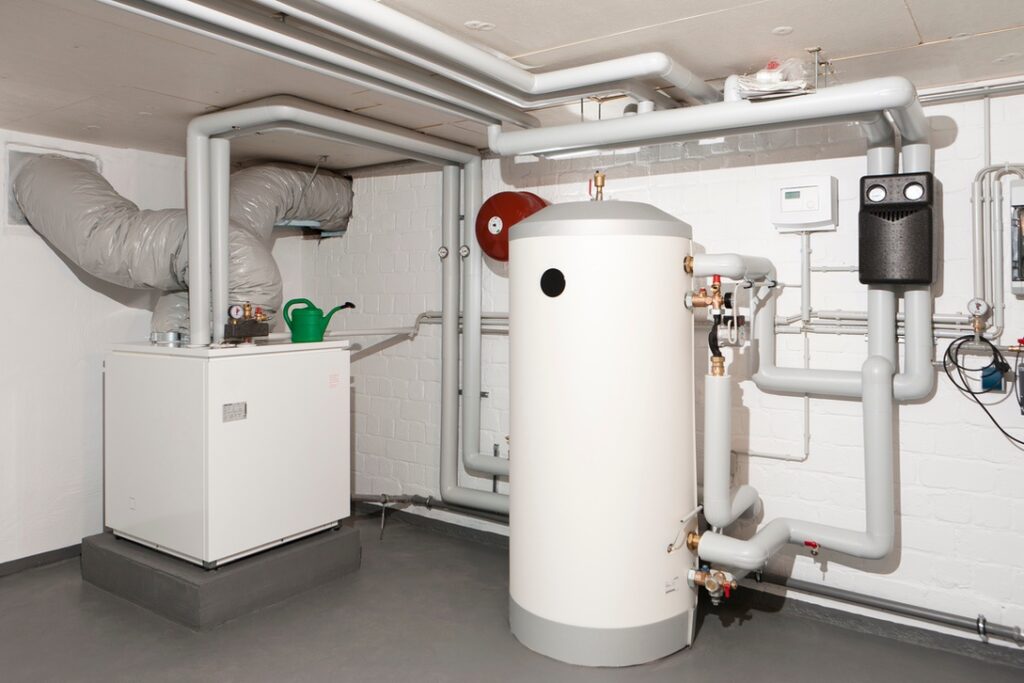Action Furnace has decades of experience installing and maintaining HVAC equipment. Let our team explain the terminology used in this industry to you so that you can better understand the needs of your home comfort equipment and take steps to keep it in excellent condition.
...
Your HVAC system is complicated, but understanding what it needs to function properly shouldn’t be. That’s why it’s helpful to know the names of different parts and procedures next time you’re working with a professional to replace or repair your furnace, AC, or water heater.
Our team at Action Furnace is here to help. Below, we’ve compiled a list of common (and uncommon) terms you might run into when examining your furnace or having a technician provide the service it needs. Read on and be more comfortable around your home comfort equipment!

Key Furnace Terms
Your furnace is the most prominent and visible part of your home’s HVAC system. A furnace heats air by combustion (in natural gas or propane furnaces) or via heating coils (in an electric furnace).
Furnaces are complex systems with many sensitive parts. Here’s an overview of some of the most important components and processes your furnace relies on to produce heat:
- AFUE (Annual Fuel Utilization Efficiency): A measure of how efficient a furnace is in converting fuel into heat over the course of a year. The higher the AFUE percentage, the more efficient the furnace is.
- Blower Motor: The motor that drives the fan blades that circulate air over the heat exchanger and throughout your home.
- British Thermal Unit (BTU): One BTU is the amount of energy required to raise one pound of water one degree Fahrenheit. These units are commonly used to express the rate of heating for HVAC systems.
- Cold Air Return: A large vent, typically mounted where the floor meets the baseboard. The cold air return acts as the intake for a furnace system, enabling the furnace to draw ambient air from inside the home down to be heated and then recirculated.
- Flue: The duct or pipe through which waste gases (like carbon dioxide and water vapor) are expelled from your home. This is an important safety feature in any furnace.
- Heat Exchanger: Part metal chamber, part passageway, the heat exchanger extracts heat from the hot air generated by the burners in your furnace. Air is then forced over the heat exchanger by the blower motor (or fan), and the resulting warmed air is then circulated throughout the home. Many high efficiency furnaces have two heat exchanges to maximize the amount of heat extracted from a given amount of fuel.
- Pilot Light: On many natural gas furnaces a pilot light is used to facilitate ignition. Pilot lights should be checked regularly to verify that they are working properly (the flame should be blue in a healthy furnace).
- Thermostat: A device that is typically mounted in a centralized location within the home that enables you to regulate the indoor air temperature. There are many different types of thermostats, but all of them send a signal to the furnace when temperatures have dropped below the specified limit. Smart thermostats can be controlled from your device using WiFi or Bluetooth technology, and are designed to adapt to your routines—reducing wasted energy and saving you money over time.

Key AC Terms
Your air conditioner is the system that dehumidifies and extracts heat from your indoor environment. Air conditioners use refrigerant to transfer heat out of your house and into the air outside as it goes through a series of state changes.
Like furnaces, air conditioners use a variety of techniques and technologies to function properly. Here are some of the most important terms related to their use:
- Air Changes Per Hour: The hourly ventilation rate divided by the volume of a space. This is used for determining the rate at which air enters and leaves a given space. This is also referred to as air change rate or air exchange rate, and represented by the acronyms ACH or ac/hr.
- Air Handling Unit: The central unit of the HVAC system (consisting of the blower, heating/cooling elements, filter racks, your humidifier, and dampers). The term generally encompasses everything that comes into direct contact with the air flowing through your system—excluding the ductwork. This unit is commonly abbreviated and referred to as an AH or AHU.
- Coil: This is the device that is responsible for heat transfer to air. It is generally placed in the air handling unit or ductwork and can be heated and cooled to affect the temperature of the air around it.
- Condenser: A component inside an air conditioner that removes heat from the system. A condenser can transfer heat to air or an intermediate fluid.
- Evaporator: This component of the air conditioner adds heat to the system. It absorbs heat from the air or from a liquid transfer method. This is the cold side of the air conditioner.
- Fluid Regulating Valve: This crucial component of the AC system controls the amount of refrigerant liquid flowing through the coil, allowing for precise temperature control and ensuring optimal efficiency.
- Glycol: A type of heat-transfer fluid found in many air conditioners. It is commonly used for its low freezing point and resistance to icing, which helps maintain optimal temperature conditions within the system.
- Heat Pump: A device that can cool or heat your home by using refrigerant to transfer heat into or out of the interior. Heat pumps use the same basic technology as air conditioners, but can reverse the cycle to move cool air outdoors in chilly conditions. Many can also add supplementary heat with electric elements or natural gas burners.
- Refrigerant: A chemical compound that absorbs heat from the environment and can provide refrigeration or air conditioning when combined with other components such as compressors and evaporators. Commonly used refrigerants include R-22 and R-410A.
- SEER (Seasonal Energy Efficiency Ratio): This rating measures the cooling efficiency of your air conditioner or heat pump. A higher SEER rating means greater energy efficiency.
- Superheat: This refers to the temperature of a liquid being above its regular saturation point. In an AC system, ensuring that refrigerant experiences a certain amount of "superheat" can prevent damage to the compressor by ensuring it does not intake liquid refrigerant (which can be damaging).

Key Water Heater Terms
Water heating is the process to heat water for domestic use such as bathing, washing dishes, cooking food, and space heating. A water heater is the system that allows your home’s water fixtures to provide a constant source of hot water—but there are several different types of technology that can help you accomplish this process (see solar water heaters, storage tank water heaters, and tankless water heaters below).
- Anode Rod: A steel core wire surrounded with one of three different metals: aluminum, magnesium, or zinc. The rod is screwed into the top of your water heater and protects your water heater from rusting.
- Dip Tube: The tube inside the water heater that sends cold water to the bottom of the tank so it can be heated.
- Energy Factor (EF): This measures how efficiently a water heater converts energy into heat, also considering factors like how much heat is lost during storage. The higher the EF, the more efficient the water heater.
- Solar Water Heaters: Using the sun’s energy to heat water, this type of heater is one of the most popular choices for consumers because it’s more cost-effective compared to other types of heaters. It uses large panels to store the energy from the sun to heat water either for homes or office spaces.
- Storage Tank Water Heaters: This type of water heater stores water in a tank and heats it up for use. Types include gas water heaters, electric water heaters, and oil water heaters. Gas water heaters are more efficient in cost because they use natural gas to heat water. Electric heaters are popular for their ease of use and maintenance. The oil heater is not as widely used as it once was.
- Tankless Water Heaters: Unlike conventional heaters, the tankless water heater doesn’t have a storage tank. It only heats water on demand, making it more efficient for specific uses.
Know Your HVAC Terms & Trust the Experts
The more you understand about your home comfort equipment, the easier it will be to understand the advice you get when working with our experts. We base our recommendations on decades of combined experience working with homeowners in Calgary, Edmonton, and Red Deer, and strive to ensure that the benefits of our services are always clear to our customers.
Use the terms above to continue learning about your HVAC equipment so you can keep it in great shape for years to come—and Contact Action Furnace to speak with a home comfort specialist who can help you book the service it needs.



